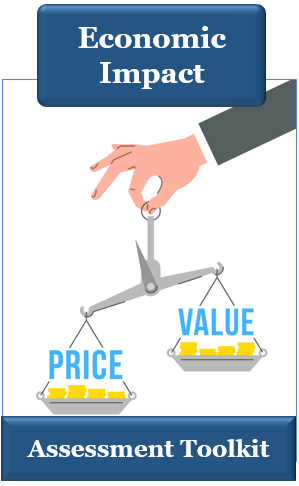Quick Guide to Efficient ITIL Change Control
Summary – ITIL Change Control Process
Picture a bustling cityscape, where the intricate network of roads, bridges, and traffic lights must constantly adapt to an ever-increasing volume of cars, pedestrians, and unpredictable events. This dynamic ecosystem closely mirrors the complexities of today’s IT environments.
Enter ITIL Change Control: the unsung hero ensuring that each modification, update, or new introduction to an IT system flows seamlessly, without causing gridlocks or collisions. It’s not just about managing changes—it’s about choreographing a technological ballet, where every move is intentional, synchronized, and in harmony with the broader environment.
“Join us on a journey through the highways and byways of ITIL Change Control, the linchpin that keeps our digital cities running smoothly.”
The Information Technology Infrastructure Library (ITIL) change control is a crucial process in IT service management. It ensures that standardized methods and procedures are used for efficient and prompt handling of all changes, thus minimizing the impact of change-related incidents on service quality and improving an organization’s operations.
A key element of this approach is the IT change control policy, a document that sets the framework for managing modifications within an IT environment, defining the roles, responsibilities, and processes involved.
Change control in ITIL 4 reflects the evolving needs of the IT industry. It incorporates a more agile and flexible approach to handling changes, focusing on managing the risk of changes regardless of their size and type. The change control ITIL 4 process revolves around 5 critical stages:
(1) Request for Change (RFC), (2) Change Assessment/Evaluation, (3) Change Approval, (4) Change Implementation, and (5) Change Review and Closure.
The Request for Change (RFC) and Change Assessment/Evaluation stages involve the submission and assessment of proposed changes. Once the RFC has been logged, the potential impact of the proposed change is assessed.
The stages of Change Approval and Change Implementation involve decision-making and execution. The Change Advisory Board, comprising representatives from key areas within the organization, makes the decision based on the evaluation report. Upon approval, the change is meticulously deployed in the live environment, with a fallback plan in place for unexpected results.
The final stage, Change Review and Closure, involves evaluating the change to ensure it meets the defined objectives and does not adversely affect the IT service or users. The effectiveness of the change is measured, and issues faced during implementation are recorded. To support this process, we have provided you with customizable IT change control policy and process templates ensuring efficiency and compliance with ITIL best practices.
Can’t wait to dive deeper into the realm of ITIL change control? Then, what are you waiting for? Head on down to our Table of Contents and start exploring.
 2024 Guide to Efficient IT Change Control
2024 Guide to Efficient IT Change Control
See Also: Guide on How to Handle Change Management in Agile Projects
|
DETAILED SECTION |
|
If you’re eager to delve deeper into the world of ITIL change control, proceed to our detailed sections below that provide a detailed overview. |
Table of Contents: 2024 ITIL Change Control Guide
Keep on scrolling down this page to read each section or click any link below to go directly to that section.
- ITIL Change Control Introduction
- IT Change Control Policy | Why is it Important in IT Change Control?
- Overview of ITIL Change Control Process
- Benefits of ITIL Change Control in Change Management
- Free IT Change Control Template Resources
- Conclusion | 2024 Guide to Managing IT Change Control Process
- FAQ | ITIL Change Control Overview
ITIL Change Control Introduction | What is IT Change Control?
Information Technology Infrastructure Library ITIL change control, also known as change management, is a process used in IT service management (ITSM) that ensures standardized methods and procedures are used for efficient and prompt handling of all changes.
ITIL change control process minimizes the impact of change-related incidents upon service quality, and therefore, improves the day-to-day operations of the organization.
Related: ITIL Change Management Process Flow Guide
IT Change Control Policy | Why is it Important in IT Change Control?
An IT change control policy is a crucial document that sets the framework for managing modifications within an IT environment.
This policy outlines the purpose, scope, roles, and responsibilities, along with the step-by-step process that’s followed from the inception of a change request to its implementation and final review.
Think of it as a guiding principle that outlines the approach and protocols for managing changes in the IT environment. The IT change control policy also guides how changes are classified, how emergency changes are handled, and the requirements for documentation and reporting.
This ensures that changes are implemented in a controlled manner, mitigating risks, minimizing disruptions, and improving the overall efficiency of your IT services. If you’re in search of a robust IT change control policy template, keep reading!
We understand the challenges involved in creating such a policy from scratch. Therefore, later in this article, we will be sharing a comprehensive IT change control template that you can adapt to suit your organization’s unique needs.
Stay tuned! With the main information about the ITIL change control policy covered, we’ll get into IT change control process next.
Do you need more information about the IT change control process in general? Please reach out and let us know.
ITIL Change Control Process | What You Need to Know About ITIL 4 Change Control
Change is an inevitable part of the business landscape, especially in the fast-paced world of IT. But if not managed properly, change can lead to downtime, disruption, and dissatisfaction among users.
That’s where the ITIL change control process comes in, providing a structured and systematic approach to managing changes in an IT environment. Change control ITIL 4, also known as change enablement, is a progressive shift from its earlier iterations, reflecting the evolving needs of the IT industry.
The ITIL 4 change control process incorporates a more agile, flexible approach to handling modifications in the IT environment, ensuring they are managed efficiently and effectively.
The change control ITIL 4 process revolves around five key stages:
- Request for Change (RFC)
- Change Assessment/Evaluation
- Change Approval
- Change Implementation
- Change Review and Closure
Each stage of the IT change control plays a significant role in ensuring that all changes are beneficial, correctly implemented, and closely aligned with the organization’s business objectives.
Below we’ll dive deeper into each stage of the IT change control process to understand how they contribute to effective change management.
Popular Article: The Ultimate Guide for the Project Planning Process
1. Request for Change (RFC)
The first step in the ITIL change control involves the submission of a Request for Change (RFC). Change control log and requests are two essential components of the ITIL change control.
Request for Change
In the context of ITIL change control, RFC is a formal proposal for a modification in any aspect of the IT services, and it can be raised by anyone in the organization. The request should clearly define the change, reasons behind it, and the potential impact.
The RFC is then logged and passed onto the Change Evaluation phase.
Change Control Log
This is a document that records all the changes requested and made in an IT environment.
It serves as a single source of truth for all IT changes and provides a historical record. The change control log plays a vital role in monitoring and tracking changes, aiding in the audit process, and maintaining accountability.
Together, the change control log and requests provide a structured framework for managing changes in an IT environment. They help in reducing the risk of disruptions, improve transparency, and enable effective decision-making.
Do you have any questions about change control log and requests? Don’t hesitate to reach out and let us know.
2. Change Assessment/Evaluation
Once the RFC has been logged, it’s time to assess the potential impact of the proposed change. This change control ITIL 4 process includes:
- identifying the resources needed,
- cost and time estimates,
- risks associated,
- benefits to be realized, and
- effect on other areas of the organization.
The evaluation also categorizes the change based on its scale (major, minor, standard), its risk (low, medium, high), and its priority (low, medium, high).
This stage of the ITIL 4 change control is crucial in determining whether the proposed change will add value to the organization and how it should be managed.
These tools not only streamline your change assessment process but also provide comprehensive insights into the potential impact of proposed changes.
Using IT change control software also enables you to make more informed decisions, reduce risks, and ensure smooth transitions in your IT environment. If you’re interested in our free IT change control template, keep on reading!
Next, we’re moving into Change Approval step of the ITIL 4 change control.
3. Change Approval
After the assessment stage, the change proposal reaches the Change Approval stage. Here, the decision about whether to implement the change is made.
This is often handled by a Change Advisory Board (CAB), a group of representatives from key areas within the organization who use the evaluation report to make an informed decision.
CAB can either approve, reject, or request additional information. If approved, the change moves to the implementation stage of the IT change control process.
Related: Best Guide on ITIL Certification
4. Change Implementation
Upon approval, the Change Implementation stage commences.
Detailed planning, scheduling, and resource allocation are done in this stage of IT change control process.

ITIL Change Control – Change Implementation
The approved change is carefully deployed in the live environment according to the plan. Often, a fallback plan is also prepared and ready for use in case the change implementation fails or causes unexpected results. After change implementation, it’s time for the last stage of the change control ITIL 4 process.
5. Change Review and Closure
The final stage is the Change Review and Closure. Once the change has been implemented, it is reviewed to ensure it meets the defined objectives and doesn’t negatively impact the IT service or users.
The effectiveness of the change is measured, and any issues faced during implementation are recorded.
Understanding and following the ITIL change control helps organizations reduce the risk associated with changes, ensure efficient use of resources, improve communication and coordination among various teams, and ultimately deliver high-quality IT services.
If you’re searching for a structured and efficient way to manage your IT changes, an ITIL change control process template could be exactly what you need.
We understand that developing an effective process can be a complex task. To simplify this, we’ve created a comprehensive IT change control template designed to align with best practices. So, continue reading to our ready-to-use IT change control template and make your IT change management process smoother and more effective!
But first, let’s go over a quick overview of benefits of IT change control.
Do you have any input on ITIL change control process or change control log and requests that we haven’t mentioned? If so, don’t hesitate to get in touch.
Benefits of ITIL Change Control in Change Management
Implementing a robust IT change control process offers numerous advantages that can significantly enhance your organization’s efficiency and the quality of your IT services.
Let’s quickly go through some of the key benefits you can expect from adopting a well-structured ITIL change control strategy:
- Reduced Risk: Through systematic evaluation and approval of changes, the risks associated with them are identified early and can be mitigated effectively.
- Increased Efficiency: With a structured process, changes are managed and implemented more efficiently, reducing disruptions and improving service delivery.
- Improved Accountability: The Change Control process promotes accountability by recording who requests, approves, and implements each change.
- Enhanced Transparency: Through clear documentation and reporting, stakeholders gain visibility into the status, impact, and results of changes.
- Better Compliance: A structured Change Control process helps meet regulatory requirements and standards, making audit trails more straightforward and compliance easier to maintain.
- Increased Service Quality: By effectively managing and controlling changes, service quality is maintained, and potential improvements are more easily identified.
- Learnings and Continuous Improvement: The review stage allows for learning from each change, driving continuous improvement in the process and the overall IT services.
FREE IT Change Control Template Resources
Streamlining your IT change control process can often feel like a daunting task, especially when starting from scratch.
To support you in this journey, we’re providing two key templates that will serve as your foundation and guide.
These ready-to-use tools will offer the much-needed structure to your process, ensuring efficiency and compliance with ITIL best practices.
IT Change Control Policy Template
This document provides a comprehensive framework for crafting your IT change control policy.
Our IT change control policy template will guide you through defining the policy’s purpose, the roles and responsibilities involved, change classifications, procedures for emergency changes, and more.
IT change control policy was designed to set clear expectations and establish the principles that govern how changes are managed within your IT environment.
Get Your FREE IT Change Control Policy Template
IT Change Control Process Template
Detailing the steps of your ITIL change control has never been easier.
IT change control process template is designed to map out the entire process from the initial Request for Change (RFC) through to final review and closure.
Our IT change control process template helps ensure all crucial stages are included and offers guidance on how to navigate each step, making your change control process structured, transparent, and effective.
Get Your FREE IT Change Control Process Template
Both IT change control template resources can be customized to align with your organization’s unique needs, giving you a solid foundation on which to build robust and efficient IT change control.
Don’t Miss: How to Measure Success of a Project Using Change KPIs & OCM Tracking
Conclusion: How to Manage IT Change Control Process
In conclusion, implementing an ITIL Change Control Process in your organization is a strategic move towards more reliable and controlled IT service management.
As we’ve seen, these processes are designed to manage and streamline changes effectively, minimizing disruptions and maximizing benefits to the IT services.
As you embark on this journey, keep the ITIL principles in mind, continually monitor your progress, and always be open to improvement.
Implementing a robust ITIL change control process will not only bring about positive transformation but also enhance the overall service quality of your IT organization.
FAQ: ITIL Change Control Overview
What is IT change control?
ITIL change control or IT change control is a process used in IT service management (ITSM) that ensures standardized methods and procedures are used for efficient and prompt handling of all changes.
What is change control ITIL 4?
Change control ITIL 4, also known as change enablement, is a progressive shift from its earlier iterations, reflecting the evolving needs of the IT industry. The ITIL 4 change control process incorporates a more agile, flexible approach to handling modifications in the IT environment, ensuring they are managed efficiently and effectively.
What are change control log and requests?
Change control log and requests are two essential components of the ITIL change control. Request for Change (RFC) is a formal proposal for a modification in any aspect of the IT services while change control log is a document that records all the changes requested and made in an IT environment.
What are the stages of the IT change control process?
The change control process revolves around five key stages:
Request for Change (RFC)
Change Assessment/Evaluation
Change Approval
Change Implementation
Change Review and Closure
Note: Content on OCM Solution's ocmsolution.com website is protected by copyright. Should you have any questions or comments regarding this OCM Solution page, please reach out to Ogbe Airiodion (Change Management Lead) or the OCM Solutions Team today. OCM Solution was previously known as Airiodion Global Services (AGS).
External sources: stock.adobe.com




